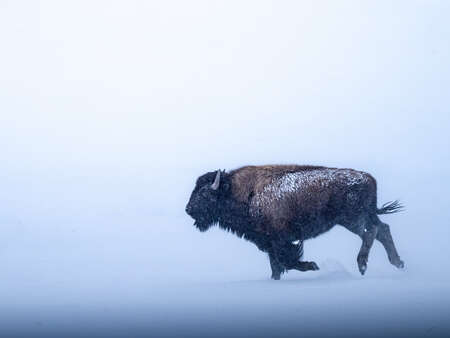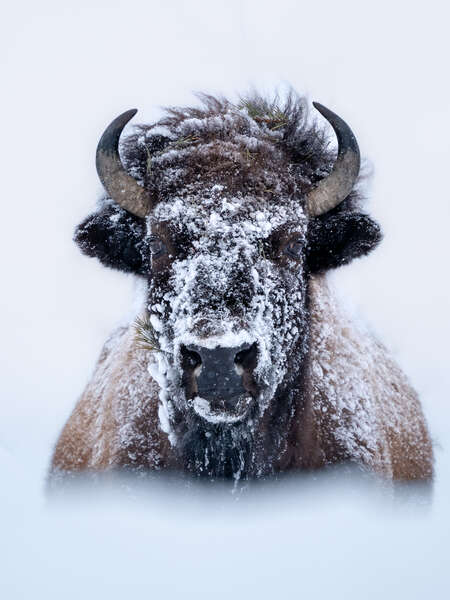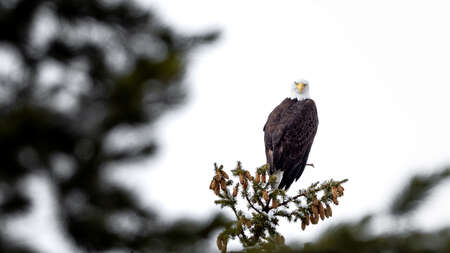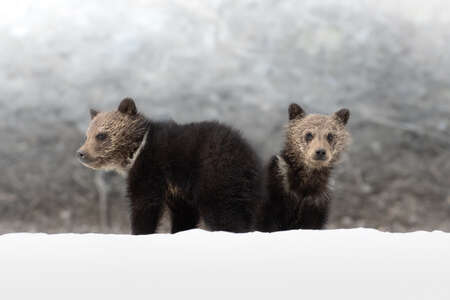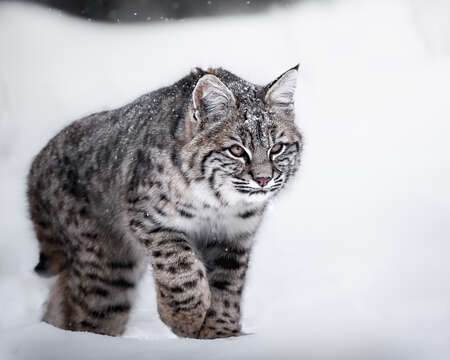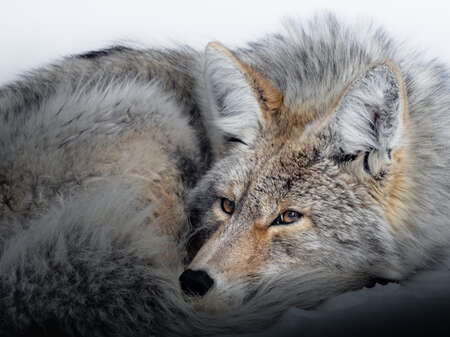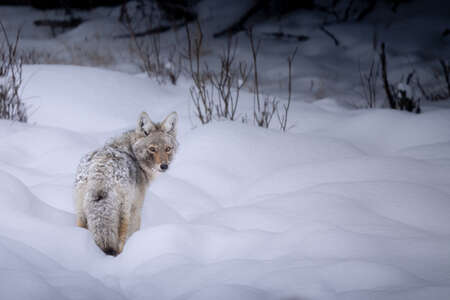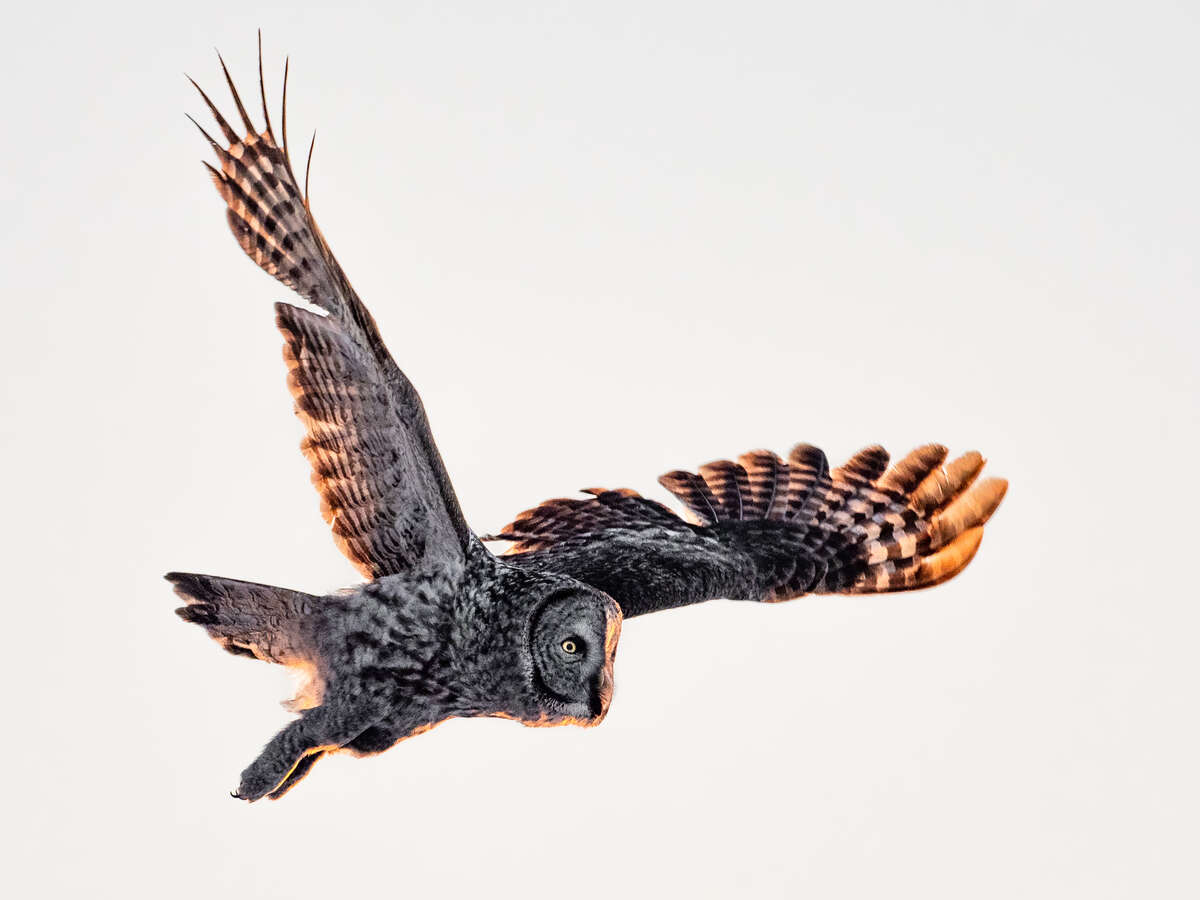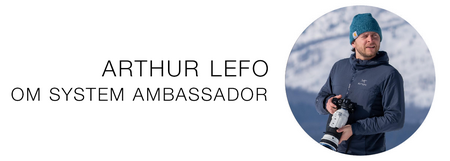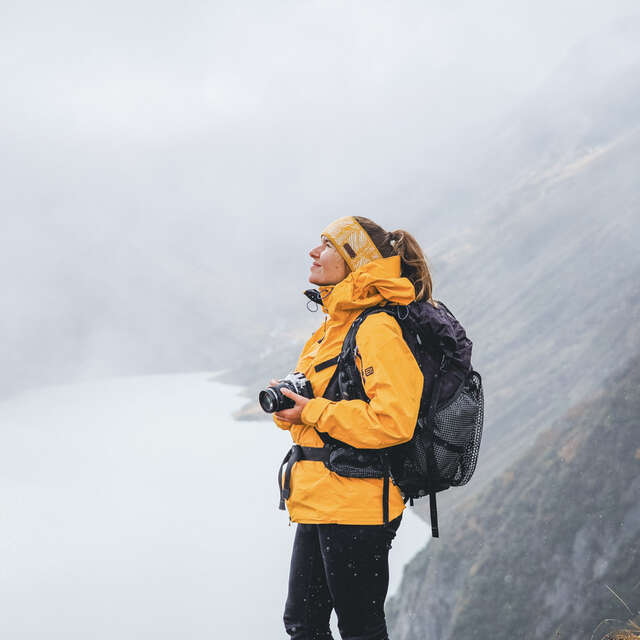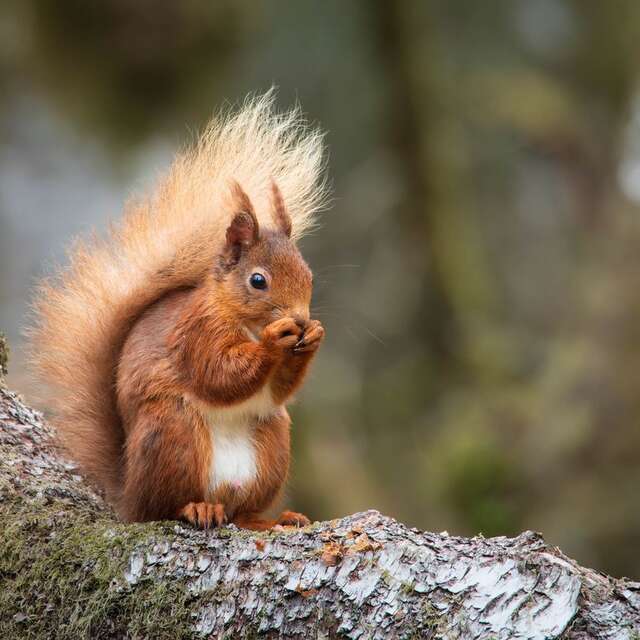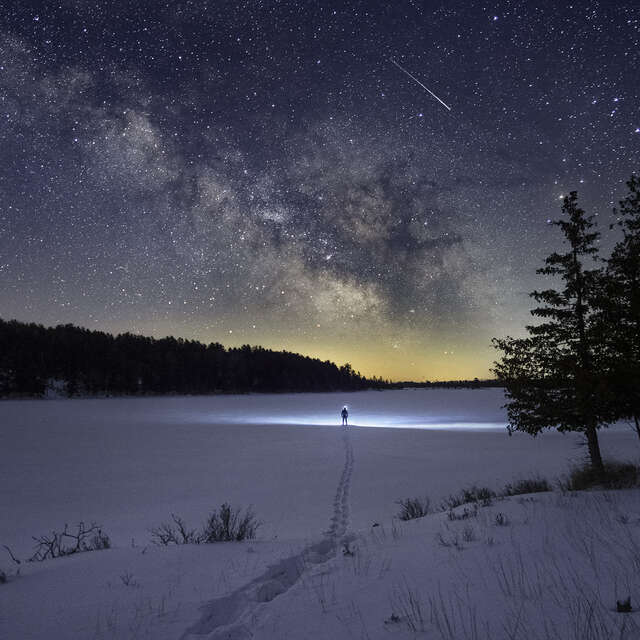As wildlife photographers, we are often motivated by more than the art of photography itself, often finding endless inspiration in the amazing wonders of the wild. As such, our work is also generally intended to carry deeper meaning, to influence action and inspire the continued conservation of our cherished natural world. There is arguably no better time or place than the cold and dark depths of winter to capture soul gripping wildlife imagery, but doing so requires a harmony between our subjects, our environment, and ourselves.
Getting To Know Our Subjects
Unlike other genres of photography, wildlife photographers do not have the luxury of working with malleable subjects. As a result, understanding our subjects from a behavioral and ecological standpoint is the single best thing we can do to increase our chances at succeeding. This becomes ever more important in the winter months when most animals face their biggest survival test of the year, making them even more prone to stress and displacement from both natural and human causes.
As the days get shorter and the temperatures begin to plummet, many animals nestle into a ‘winter range’ where they have more consistent access to food, avoid predation, or simply enjoy more tolerable weather. This often gives us the opportunity to become more familiar with individual animals as they tend to move around less. Of course, some species tend to do the opposite (such as wolves), but generally speaking the most intimate encounters with wildlife occur in the winter months thanks to this restricted movement, resource availability, and general lack of human activity.
Take the time to visit the same areas you usually photograph in throughout the winter and make it a point to slow down in hopes of better understanding and predicting the animals’ behaviors on future days. Learn tracking skills so that you can better analyze recent wildlife movement after fresh snowfalls, and keep a log of where you’ve seen activity and the conditions present during good sightings - almost nothing in nature happens as a coincidence, its up to us to understand why. Be calm and patient taking the time and space to allow animals around you to feel comfortable and to become more and more habituated to your non-threatening and respectful presence over the course of the winter. Our goal as wildlife photographers should be to never intrude or disrupt any natural behaviors or patterns, allowing wildlife to live freely and without worry of our presence.
By applying these simple tips, you’ll be on your way to developing a healthier relationship and deeper understanding of the wildlife that you spend time with - which will ultimately manifest into better photographic opportunities down the line.
Understanding Our Environment
Beyond understanding the natural world around us, understanding our photographic environment is the next essential step to creating outstanding winter wildlife images. Luckily, the winter can present some of the most magical shooting conditions - gentle falling snow, frost covered animals, monochromatic foregrounds and backdrops, and so much more. However, the winter can also present us with even more challenging conditions than we’re used to - especially when it comes to light.
Although it can be easy to attribute being at the right place at the right time thanks to luck, we have the tools at our disposal to create our own luck and increase the odds that we will seize more of these moments in the future. It begins with understanding your subjects, but our odds are elevated even further when we follow the light. In the quiet hours of the early morning when the sun has yet to peak over the horizon, the best light is often found in large open areas such as prairies, meadows, open stretches of riverbanks or lakeshores, anywhere that light has the room to fill the air and reflect off of the white world around you.
Coincidentally, this is also where you might be most likely to find wildlife roaming in the wee morning hours before human activity picks up. On the other hand, a bright, cloudless day where the sun beams down in its full force on the surface of the snow and creates heat distortion and harsh shadow contrast can be a much more challenging time and place to shoot. As always, follow the light and try and find yourself in an environment such as the heart of a forest or wandering in the shadow of a mountain instead. This simply puts you in the best place possible to create a beautiful image should you encounter an animal. If you have begun to understand an animal’s daily or weekly patterns, you may have less flexibility and may need to use the weather to your advantage - go out on overcast or snowy days, early mornings, and late evenings mostly to make sure you’re out when the light is most conducive to creating magic.
As you continue to refine your understanding of your subjects as well as your environment by revisiting certain areas, take the time to notice angles and compositions that you might enjoy without the presence of an animal. While the wildlife activity is slow, take more photos of the landscape around you and use your viewfinder as a way of giving yourself ideas for future images - the creative process begins long before the wildlife sighting.
Elevating Our Skills, Our Techniques, and Ourselves
Now that you’ve grown to develop a more intimate understanding of both your subject and environment, the last piece to truly elevating your winter wildlife photography is to harness the creative potential of the following tips and techniques.
Subject Isolation
The best way to create an image that is compelling, leaves room for thought, and stops the viewer in their tracks is to isolate the subject from its surroundings. Luckily, the crisp and soft whiteness of snow lends itself perfectly to creating an ideal environment to do this. In the winter many grasses, shrubs, and other distracting elements are covered by pillows of snow which allows us to have a subject in a pure white environment. Paired with an interesting gaze or unique display of behavior, this creates dream conditions for capturing intimate wildlife portraits, where our attention can be fully directed towards the subject rather than its surroundings.
Assuming you can do so safely and while respecting the animal at hand, move around to find angles that best isolate your subject from the foreground and backdrop. Move slowly and mindfully, while stopping to take shots and look through your viewfinder as you relocate. Some of the best shots are captured from angles that may not have seemed obvious at first, and moving slowly increases your odds at succeeding at this. Again the creative process begins long before the moment, so take time on slower days to become more familiar with the layout of the areas where you shoot and to generate ideas about where and how you could compose images to maximize subject isolation.
Create Softness Where It Is Needed
Another way to enhance the isolation of your subject and to give your image more depth is to create softness where it is needed. During a thrilling wildlife encounter where we are more prone to click away in excitement, this is often the most commonly forgotten tip as people tend not to move much once they have found an angle that suits their vision. However, some of the most impactful changes to image composition happen at the micro level: small tweaks to positioning that have the potential to turn a good image into an outstanding one. In terms of creating softness, the number one most impactful technique is to create a soft backdrop.
To do this, continuously think about reducing what we will refer to as the subject-backdrop ratio, which is simply the distance from you to your subject over the distance from you to your backdrop. In other words, the closer your are to your subject while keeping your backdrop as distant as possible, the softer your background will be. On the other hand, if you are relatively far from your subject but your subject is closer to its backdrop than it is to you, you will likely end up with more of the backdrop in focus. Of course, reducing the subject-backdrop ratio means that sometimes you might be tempted to move closer to your subject. Always keep in mind: the animal comes first. Never compromise an animal’s comfort for the sake of a photograph. Instead, use low aperture telephoto lenses to maximize softness and reach while maintaining a safe distance.
Another useful technique to create softness is to create foreground bokeh where it may not naturally exist. Take the time to get eye level or even below eye level with your subjects, making use of low lying objects like the soft white bokeh created by snow covered bushes or the dark rugged bokeh of a rock in the foreground to further create depth and isolate your subject. Keep your creative process continuous, even during an animal encounter, and you will end up with a far greater variety and likely quality of images to choose from when the time comes to edit them.
The Exposure Dilemma
The most common dilemma to face while in photographing a wild animal in the winter is to decipher how to best expose your image. The stark contrast between dark animal fur and the excessively white world around can create challenging shooting conditions - so how do we expose our images in the winter? Unfortunately, there is no one-size-fits-all solution here. Instead, overexposing and underexposing each have their own benefits which may lead to better results depending on the situation and your post processing affinity.
Overexposing is useful typically leads to better details in the animal and its shadows, while often leading to some white snowy areas becoming slightly over exposed. Typically, the overexposed areas can be addressed in post processing by making backdrops pure white and leaning into the bright sections. This is ideal for portraits and minimalistic takes on a subject on days with softer light. Underexposing, on the other hand, is more effective on brighter days without cloud cover and can be more effective at capturing all of the details in the image. It can help eliminate the harsh light which often blows out highlights and bring attention to other details in the image: the background, foreground, and sky.
There is no right answer. The most important thing when it comes to exposure to to approach each photographable moment with an idea of how you would like to edit it in your post processing software - leaning into elements that can be modified and avoiding those that cannot.
Winter Is The Time To Shine
Whether you are just getting started, practicing a long time hobby, or a serious photographer looking to grow their career, applying these tips can help keep you mindful and present throughout your winter wildlife photography experience. By learning more about your subjects, you will undoubtedly be more mindful of the animal’s needs and habits which will allow you to have more encounters while also allowing you to understand how you may adversely impact an animal with your presence. By understanding your photographic environment, you will create your own luck and find yourself in places where you are more likely to create stunning imagery given an animal encounter. And lastly by applying a few of these small tips and techniques to your creative process, you will take many good images and turn them great. So get out there, embrace all there is to learn, and elevate your winter wildlife photography!
Instagram: @arthurlefo
Arthur is a wildlife and conservation photographer based out of Jackson Hole, Wyoming. In a world ever more disconnected from wilderness, Arthur strives to share intimate moments with wildlife and landscapes alike to open the public eye to the beauties and harsh realities of our natural world. His passion lies in North American mammals and high latitude regions such as Alaska and Greenland. Outside of photography, he is an accomplished tour guide and fly fisherman and loves to unwind listening to groovy tunes.
